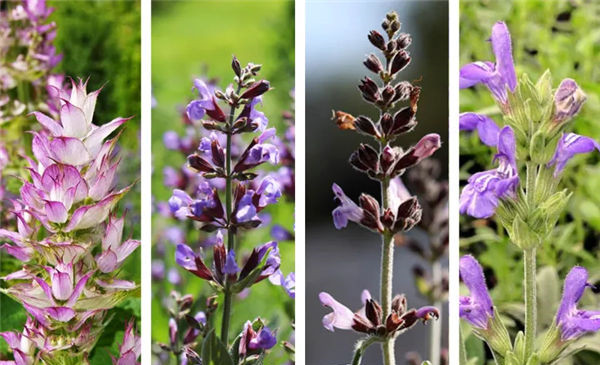Sage, also known as medicinal sage, is an aromatic plant of the genus Salvia in the family Lamiaceae. It is a perennial dwarf shrub with short woody stems and lush branches. It is native to the Mediterranean region and is now cultivated all over the world. Today's origins mainly come from Spain and southern France. Fresh or dried sage is also used to make essential oil. The parts of sage used to extract essential oil are stems and leaves. They are harvested once a year. The leaves are 4 to 5 cm long, gray-green, with a rough and downy surface. Containing 1%~2.8% essential oil, the main components are 1,8-cineole, a-thujone, p-thujone and camphor. In view of the fact that the chemical composition of aromatic plants is affected by factors such as place of origin, variety, growth environment, etc., Using steam distillation method.
Clary sage essence is light yellow-green in color, has a rich nutty sweetness, anise and camphor aroma, and also has a sweetness similar to fruit wine. It is an important ingredient in many men's perfumes. It has anti-convulsant, anti-fungal, anti-spasmodic, astringent, sedative, neurotonic, soothing, toning and auxiliary properties, and plays an important role in the body's hormonal system.
There are four most common sage plants in the genus Salvia: Salvia sclarea, Salvia officinalis, Greek sage (Salvia triloba), and Spanish sage (Salvia lavandulaefolia).

Salvia sclarea Salvia officinalis Salvia triloba Salvia lavandulaefolia
Clary sage (Salvia sclarea) essential oil is the most commonly used and the safest and mildest variety of all sages. Contains high proportions of linalyl acetate and linalool, but no ketones. One of the key components in essential oils is diterpene alcohols, namely claryalol. Its molecular structure is very similar to estradiol in estrogen, so it has an estrogenic effect and is one of the top essential oils for balancing hormones. A popular oil that calms nerves and promotes circulation.
Common sage (Salvia officinalis) essential oil contains up to 50% ketones, including thujone and camphor, which can cause neurotoxicity. It is not usually used in aromatherapy. Be sure to pay attention to the Latin name when purchasing.
The ketone content of Greek sage (Salvia triloba) essential oil is not as high as that of ordinary sage essential oil. It is mainly oxidants, which is good for the respiratory system. The latest data shows that Greek sage essential oil has certain effects on lowering blood pressure and blood sugar.
Although Spanish sage (Salvia lavandulaefolia) essential oil contains a certain proportion of ketones (camphor), it is much milder than ordinary sage (Salvia officinalis). The essential oil's antioxidant, anticholinesterase, anti-infective, and antibacterial properties rank first among all sages.
Plate Centrifuges Application
Esterification Reaction In Fragrance Synthesis
Fractionating Geranium Essential Oil
Contact: Project Manager
Phone: +86-18120438367
Tel: +86-18120438367
Email: info@tycoretech.com
Add: No. 1, Optics Valley Avenue, East Lake New Technology Development Zone, Wuhan, Hubei, China
We chat
